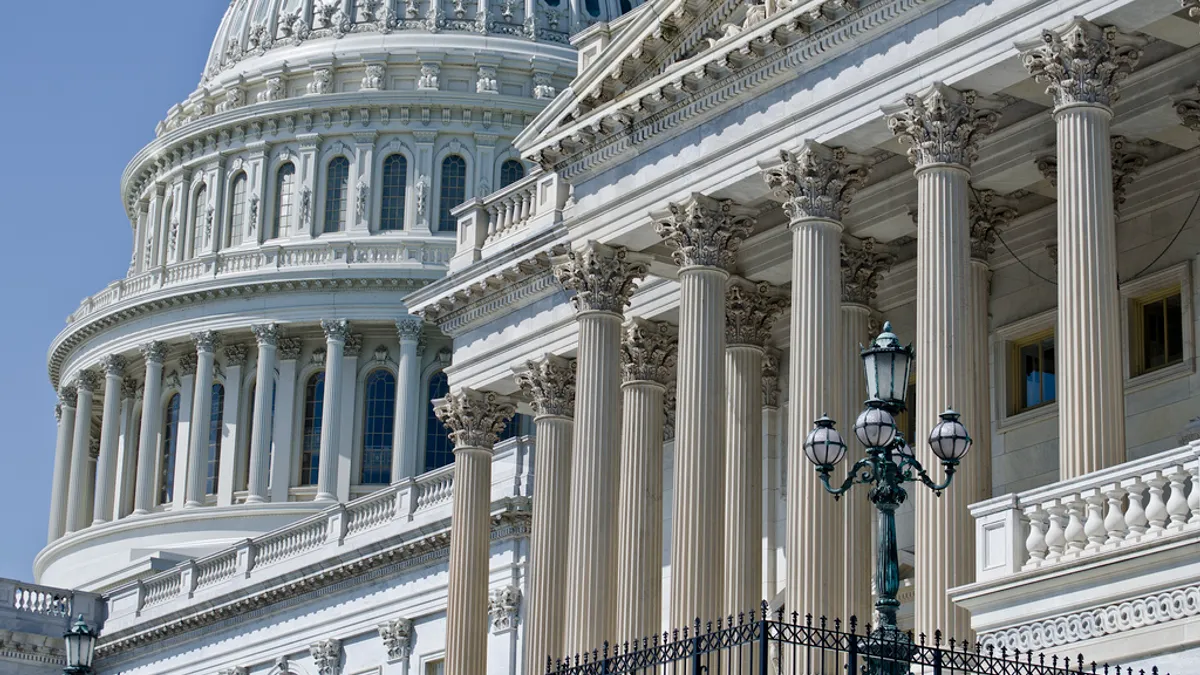UPDATE: Jan. 3, 2021: President Donald Trump signed the package on Dec. 27, 2020, after unexpectedly pushing back on the legislation.
UPDATE: Dec. 22, 2020: Congress passed the coronavirus relief and government funding package late Monday. The legislation heads to the president, who is expected to sign it.
Dive Brief:
- Congress is expected to vote soon on a $900 billion coronavirus relief proposal that includes around $23 billion for colleges and universities, according to a summary of the proposal.
- Lawmakers will also vote on a $1.4 trillion deal to fund the government, which includes key higher education measures that expand access to federal aid.
- Higher ed groups have asked Congress for much more relief aid than the sector received — at least $120 billion to cover lost revenue and new expenses because of the pandemic.
Dive Insight:
The relief package would be the second major funding infusion for colleges and universities during the pandemic.
It follows the $2 trillion Coronavirus Aid, Relief and Economic Security Act, which passed in March and gave $14 billion directly to colleges, though about half had to be used for student aid. Colleges received funding through other CARES Act measures, too, including a $3 billion pot of education money for state governors. And many tapped an offer for small business loans.
But higher ed groups said that was not enough. The American Council on Education said in a statement this summer that the sector needed $120 billion to cover lost income and new expenses associated with the pandemic.
In a letter this month, the lobbying group outlined the hit colleges are taking, noting "substantial increases" in students' financial aid needs and growing auxiliary revenue losses.
The latest relief deal, which ACE called "wholly inadequate" in a statement Monday, gives $20 billion to public and private nonprofit colleges, including online-only schools. HBCUs, tribal colleges and Hispanic-serving institutions would get an additional $1.7 billion. And $113 million would be left for institutions with unmet needs.
The bill limits how much money for-profit colleges can receive and how they can use it.
The formula for distributing the funds puts more emphasis on part-time students than the CARES Act did, giving community colleges an opportunity to receive more funding. Further, wealthy private colleges will have their allocations cut by 50% and can only use the money for student aid or coronavirus-related health and safety expenses.
The deal forgoes the liability shield for coronavirus-related lawsuits that Republicans hoped for. And Democrats missed out on a large appropriation for state and local governments.
Flexible aid to state and local governments is "paramount to public higher education" because it lets government leaders target their support, strengthening ties between the state and its colleges, said Tom Harnisch, vice president for government relations at the State Higher Education Executive Officers Association. The deal does include targeted aid for state and local governments, such as for transit and the Governor's Emergency Education Relief Fund.
"If history is any guide, public higher education will be one of the top items on the chopping block for states in 2021," Harnisch said.
States would get funding for coronavirus testing and vaccine distribution through the deal, however, something colleges have been called on to help with.
The separate proposal to fund the federal government includes several measures that would help more students get financial aid.
Among them, ending a quarter-century ban on incarcerated students receiving Pell Grants. The proposal also cuts dozens of questions from the Free Application for Federal Student Aid, and it makes it easier for students and families to figure out how big of an award they will receive. The maximum Pell Grant award for the upcoming academic year will be $6,495, a $150 increase.
Higher ed groups applauded the changes. "Easing access to federal student aid is a step toward a more equitable higher education system, especially for students of color and students from low-income backgrounds," said Kim Cook, executive director of the National College Attainment Network, in a statement emailed to Higher Ed Dive.















